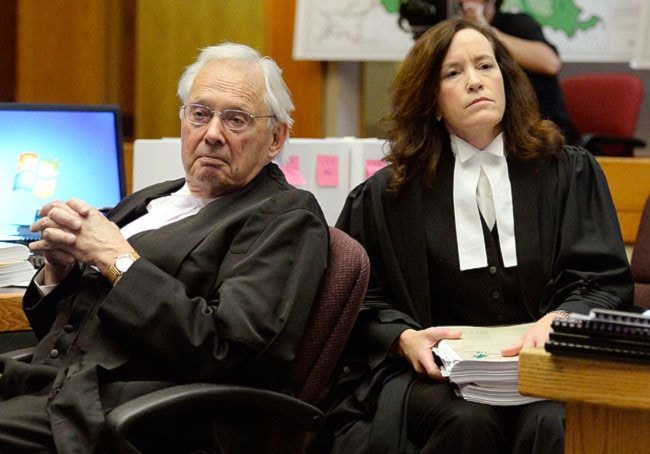The trial over the fate of the Peel watershed is back in court this week.
Yukon Supreme Court Justice Ron Veale has requested that both sides submit further arguments as to what remedy the court might make on the case.
The plaintiffs will no longer be asking the judge to declare the Peel commission’s final recommended plan for the watershed to be the approved plan, according to documents filed in court earlier this month.
That plan would see 80 per cent of the watershed protected from new mineral staking and oil and gas development.
The First Nation of Nacho Nyak Dun, the Tr’ondek Hwech’in, the Yukon Conservation Society and Yukon’s chapter of the Canadian Parks and Wilderness Society are plaintiffs in the case.
Although lawyer Thomas Berger argued back in July that the final recommended plan must be considered the only approved plan, that remedy will no longer be sought, according to the plaintiffs’ written submissions to the court on the question.
Final consultation with First Nations and affected communities did not occur in a legal way, and must occur before a plan can be approved according to the rules set out in the First Nation final agreements, the plaintiffs argue.
Therefore to simply declare the recommended plan to be binding on the Yukon government will not do, the document says.
Instead, the plaintiffs will ask the court to declare that the Yukon government’s final round of consultation was not legal.
They will ask the court to quash the government’s plan for the watershed, which protects just 29 per cent from new mineral staking.
And they will ask the court to send the final recommended plan back to the government for reconsideration.
At that point, the government must go back out to consultation, but it may only consult on modifications to the final recommended plan that the government had proposed at an earlier stage in the process.
The final plan must flow only from that strictly limited consultation, according to the plaintiffs’ submission.
The Yukon government maintains its position that the court should dismiss the plaintiff’s action against it, according to its written submission.
The plain language meaning of the First Nation agreements are clear that “on non-settlement land the government has the final word,” the document says.
The remedy called on by the plaintiffs “seeks to tie the hands of Yukon government” in a way that would in effect force them to approve the final recommended plan, or something nearly like it.
Although defence counsel maintains that no remedy is required besides dismissal of the case, it recommended alternatives in case the judge finds that the process fell outside of legal boundaries at some point.
If the court finds that the Yukon government was not specific enough when it gave feedback to the Peel commission, it should allow the government to return to that point in the process and make new recommended modifications.
If the court finds that the commission did not properly deal with the Yukon government’s proposed modifications, it should resurrect the commission and instruct them to try again.
The outcome of the plan should not be bound by the court, the defendant argues.
“The proper remedy is reconsideration without tying the hands of the decision-maker.”
Contact Jacqueline Ronson at
jronson@yukon-news.com
